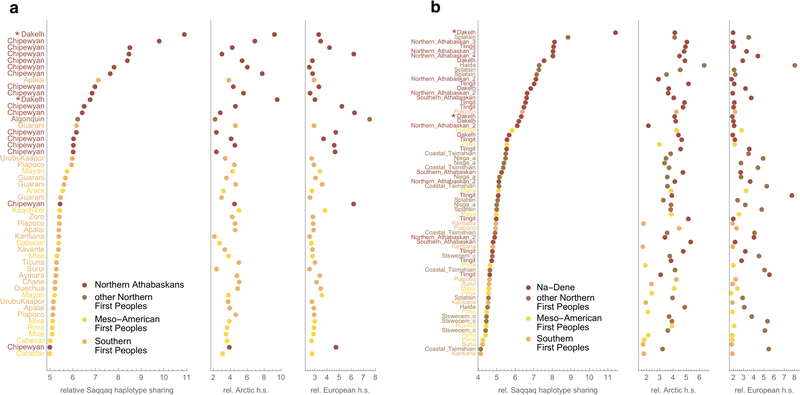Extended Data Figure 5. Relative Saqqaq, Arctic, and European haplotype sharing statistics (HSS) for American individuals.
Results are shown for the Human Origins (a) and Illumina (b) datasets, normalized using the African meta-population. Both Eskimo-Aleut- and Chukotko-Kamchatkan-speaking groups contributed to the Arctic HSS. The same statistics and statistics with other normalizers are shown in the form of two-dimensional plots in Supplementary Information section 6. Two Dakelh (Northern Athabaskan) individuals with whole-genome sequencing data5 were included in both datasets and marked by asterisks. The plots based on both datasets demonstrate that Na-Dene speakers have the highest relative Saqqaq HSS. One Haida and three Splatsin individuals also demonstrate outlying Saqqaq HSSs (b), however these individuals stand in contrast to a majority of non-Na-Dene Northern First Peoples, and Paleo-Eskimo ancestry in these individuals may be explained by recent interaction with Na-Dene speakers living in close proximity42. The Haida outlier demonstrates a maximal Arctic HSS among all First Peoples, and its Arctic ancestry has contributed to its elevated Saqqaq HSS. Saqqaq, Arctic and European statistics are largely uncorrelated in First Peoples: Pearson’s correlation coefficients for Saqqaq vs. Arctic relative HSSs are 0.56 among all First Peoples and 0.64 among Northern First Peoples in the case of the Illumina dataset, and 0.66 and 0.72, respectively, in the case of the HumanOrigins dataset.

